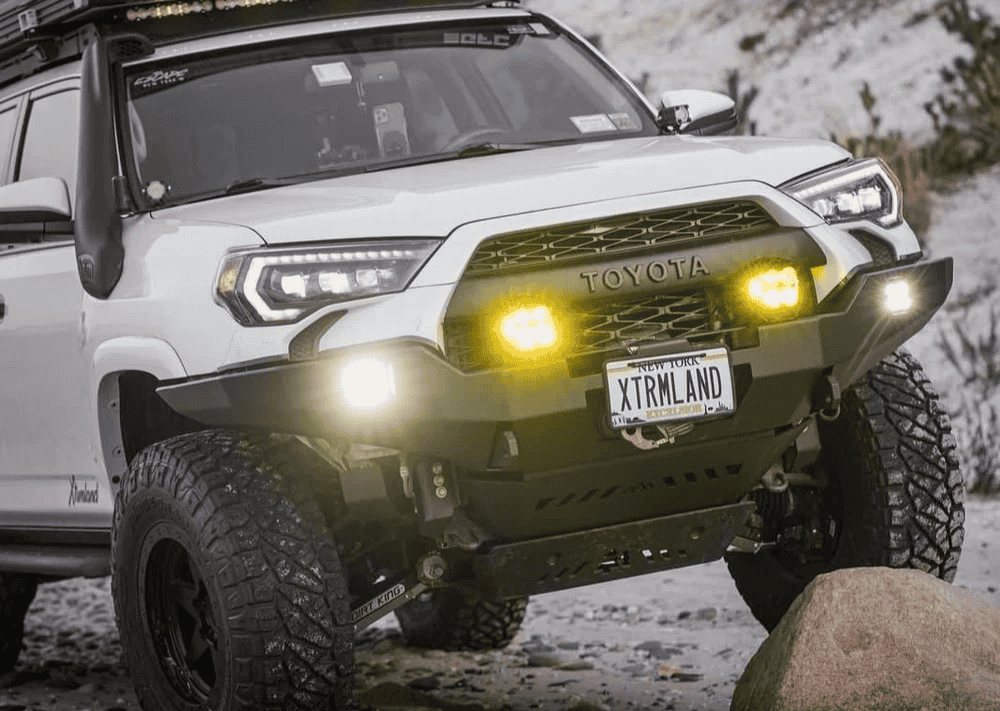Overland Vehicles

Every Jeep Gladiator expedition build should begin with an honest trip profile. Define where you will travel, how many days you will be self supported, and the seasonality you expect. A truck built for long desert crossings looks different from one aimed at forest two track or alpine passes. When your route and climate are clear, you can size tires, choose gearing, and specify shelter, fuel, and water with purpose instead of guesswork.
The Gladiator’s payload varies by trim and options, so add up everything that will live on the truck. Include passengers, fuel, water, tools, recovery gear, armor, bed rack, tent, fridge, battery bank, and storage. Keep heavy items low and between the axles to maintain stability. Use a bed rack or canopy system with secure tie downs, and verify that leaf pack, bump stops, and shock valving are matched to your final curb weight. Overweight trucks break parts and handle poorly.
Larger tires change effective gearing. If you plan to run 35s or 37s, consider axle ratios that restore torque and smooth shifting, especially with towing or mountain travel. Lockers and a proper transfer case strategy matter more than peak horsepower on technical trails. Protect the driveline with a high clearance skid system that shields the oil pan, transmission, transfer case, and fuel tank without adding unnecessary bulk.
A well tuned suspension focuses on control and load stability rather than maximum articulation. Aim for a modest lift that clears your chosen tire with full bump travel and allows proper caster. Quality shocks with digressive or adjustable valving help manage washboard and heat on long corrugated roads. Pair that with uprated rear leaf packs or helper systems to support the bed load while keeping a level stance.
Choose an all terrain or hybrid tread that balances puncture resistance with quiet highway manners. Look for a strong carcass, appropriate load rating, and a diameter that your gear ratio can support. A slightly narrower tire often tracks better in rain, snow, and ruts. Use hub centric wheels with the right backspacing to protect ball joints and scrub radius, and carry a full size spare with the same diameter and TPMS.
Armor should be strategic, not excessive. Front and rear bumpers with recovery points, rock rails, and a smooth skid array give you practical protection. A properly sized winch with synthetic line, soft shackles, a tree strap, and a dampener cover most recovery scenarios. Add a compact air system, quality jack, and traction boards. Store this equipment where it is accessible without unloading the entire bed.
An expedition build is also a habitat. A reliable sleep system might combine a bed rack and roof tent or a canopy with a bed platform and drawers. Use modular storage so kitchen, tools, and clothing have defined homes that do not rattle. Prioritize a low center of gravity and quick access to daily items to reduce stop time and campsite setup fatigue.
A dual battery or lithium system with a DC to DC charger and solar input keeps fridges, lights, and devices running for days. Hard mount the components in ventilated zones and run protected cabling with proper fusing. Add scene lighting around camp that is warm and dimmable to preserve night vision. For navigation and safety, pair offline mapping with a satellite communicator. In remote regions, reliable connectivity can be mission critical.
Carry water in baffled tanks or purpose built containers secured to the bed or rack. Target two to four gallons per person per day based on climate. Use quick connect plumbing for filling, cooking, and rinsing. For fuel, calculate range with your loaded consumption and build in a safety margin. A well planned galley with a simple stove, wind protection, and a stable surface encourages quick, efficient meals when weather turns.
The best expedition trucks feel calm at speed and easy to fix on the trail. Protect wiring with split loom and grommets, label everything, and keep spare fuses and tools in a dedicated kit. Use thread locker where appropriate and torque fasteners to spec. Eliminate rattles at the source with rubber isolation and proper hardware. Build for serviceability so you can reach filters, belts, and recovery gear without dismantling half the truck.
If you want a Gladiator that does not just look the part but performs day after day, partner with a team that treats every component as part of a system. OZK Customs designs expedition ready midsize trucks with balanced suspension, quiet interiors, smart power, and dialed storage tailored to your routes. Explore our Overland rigs to see how we approach capability and reliability. When you are ready to spec armor, racks, and living systems around your actual payload and terrain, our Custom overland upfit process turns a concept into a cohesive build. Curious about our approach and team? Learn more at Why choose OZK Customs.
We build complete expedition platforms and partial upfits that respect factory limits while expanding real world range and comfort. Share your travel plan, we will engineer the Gladiator that carries it with confidence.
Ready to turn your Gladiator into a true expedition platform? OZK Customs designs and builds complete overland systems, from suspension and armor to power, water, and bespoke storage. Tell us how you travel and we will engineer a dependable, quiet, and trail proven rig that fits your routes and payload. Start your build plan today.
ADDRESS:
6159 E Huntsville Rd, Fayetteville, AR 72701
PHONE:
(479) 326-9200
EMAIL:
info@ozkvans.com